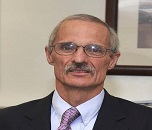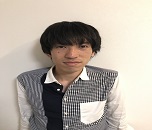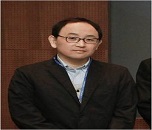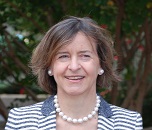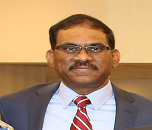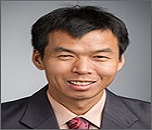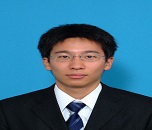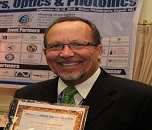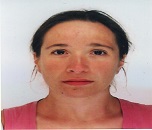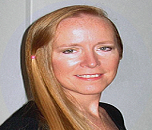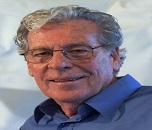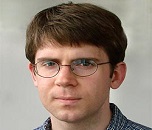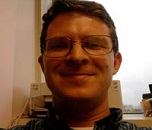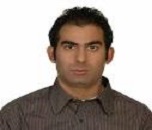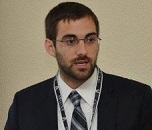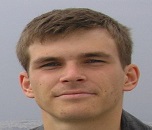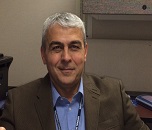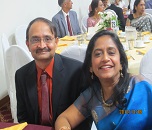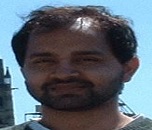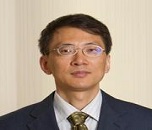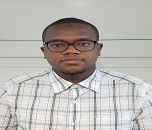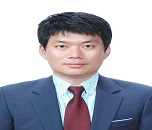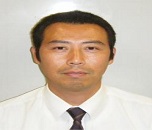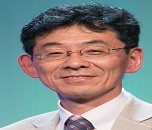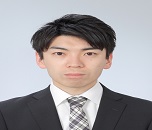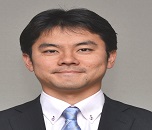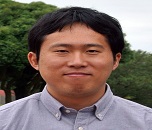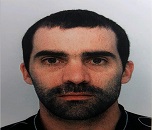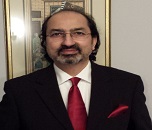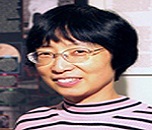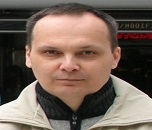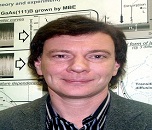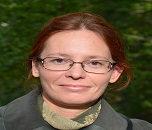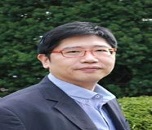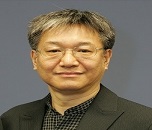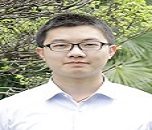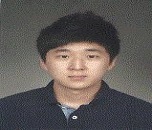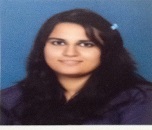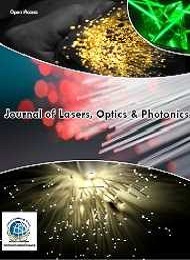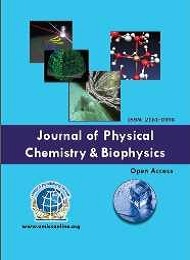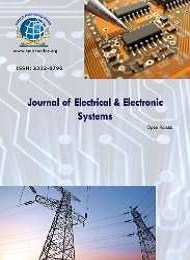Theme: From Concepts to Devices
Mail us at: opticslaserphotonics@usaconference.org
Optics 2019
Details of Optics Conferences 2019 in USA:
Conference series LLC Ltd is organizing Optics Conference in 2019 at Chicago, USA. We organize Physics Meetings in the fields related to Optics, Laser Systems and Advancements in Photonics, Nanophotonics & Biophotonics, Quantum Science & Technology, Fiber Laser Technology, Surface Enhanced Spectroscopy and Optoelectronics.
|
Conference Name |
Place |
Date |
|
Optics 2019 |
Chicago, Illinois, USA |
October 07-09, 2019 |
With the successful journey of Optics 2018 conferences in Los Angeles, USA, Conference Series planned to continue its Optics conference series saga in Chicago, USA during October 07-09, 2019.
On this felicitous occasion, Conference Series invites the participants from all over the globe to take part in the 11th International Conference and Exhibition on Lasers, Optics & Photonics at Chicago, USA during October 07-09, 2019.
The theme of the conference highlights “An insight into the Recent Research and cutting-edge Technologies in Lasers, Optics and Photonics”. Scientific Tracks designed for this conference will enable the attendees and participants to learn extremes.
Importance & Scope:
The field of Lasers, Optics and Photonics have not only helped the development in different fields in science and technology but also contributed towards the improvement of the quality of human life to a great extent. All this has become possible with the different discoveries and inventions leading to the development of various applications. The core aim of Optics 2018 conference is to provide an opportunity for the delegates to meet, interact and exchange new ideas in the various fields of Lasers, Optics and Photonics.
Why to attend Optics 2019?
Optics Conference paves a platform to globalize the research by installing a dialogue between industries and academic organizations and knowledge transfer from research to industry. Optics 2019 aims in proclaim knowledge and share new ideas amongst the professionals, industrialists and students from research areas of Lasers, Optics and Photonics to share their research experiences and indulge in interactive discussions and special sessions at the event.
Target Audience:
- Eminent Scientists/Research Professors in the field of lasers, Optics & photonics
- Junior/Senior research fellows in Lasers, Optics & photonics, Students
- Directors of Photonics companies
- Photonics Engineers
- Members of different Lasers, Optics and Photonics associations.
Conference Series LLC Ltd invites you to the Garden city of Chicago, USA for the “11th International Conference and Exhibition on Lasers, Optics & Photonics” during October 07-09, 2019. The theme of the conference “An insight into the Recent Research and cutting-edge Technologies in Lasers, Optics and Photonics” which is designed to provide a platform for best discussion and networking as well as explore the new advancements related to the application of Lasers, Optics & Photonics technology to various fields related to industries. The conference sessions will focus on topics mentioned below:
Track 1: Laser Systems
LASER stands for light amplification by stimulated emission of radiation. We all know that light is an electromagnetic wave. Each wave has its own brightness and colour, and vibrates at a certain angle, called polarization. This theory also applies to laser light but it is more parallel than any other light source. Every part of the beam has almost exact same direction and so the beam will diverge very little. With a good laser an object at a distance of 1 km can be illuminated with a dot about 60 mm in radius. As it is so parallel, it can be focused to very small diameters where concentration of light energy becomes so high that you can drill, cut, or turn with the ray. It is also possible to illuminate and examine very tiny details with the lasers, thus it is used in surgical applications and CD players as also. It can also be made very monochromic, thus only one light wavelength is present. This is not the instance with the ordinary light sources. White light contains all colours in the spectrum, but even a coloured light, such as a red LED contains a repeated interval of red wavelengths.
Optics conferences | Laser technology meetings | Photonics conferences
6th International Conference on Theoretical, Materials and Condensed Matter Physics, October 07-09, 2019 Chicago, Illinois, USA; 6th World Congress on Physics, May 13-14, 2019, Paris, France; 12th International Conference on Optics, Photonics & Lasers, June 17-18, 2019, London, UK, London, UK; International Summit and Expo on Optical Fibre Communications, May 22-23, 2019, Yokohama, Japan; 2nd International Conference On Astronomy, Astrophysics & Astrobiology, April 04-06, 2019 Auckland, New Zealand; Lasers and Electro-Optics Conference, May 05-10, 2019, San Jose, California, United States; Conference on Division of Atomic, Molecular and Optical Physics, 25 - 29 May 2019, Wisconsin , United States; Conference on Optical Interference Coatings, June 02-07,2019, Santa Ana Pueblo, New Mexico, United States; International Summit on Optics, Photonics and Laser Technologies, June 03-05, 2019, San Francisco, United States; Frontiers in Optics: Conference on Nonlinear Optics, July 15-19, 2019, Waikoloa Beach, Hawaii, United States; Optical Society of America(OSA); European Optical Society (EOS); IEEE Photonics Society; SPIE-The international society for optics and photonics; Australian Optical Society (AOS); United Physical Society of Russian Federation (UPS RF).
Track 2: Optics and Lasers in Medicine
There are some surgical operations that are perplexing to perform with the conventional scalpel. Initial trials with laser beam showed that a finely focused beam from a carbon dioxide gas laser could cut through human tissue effortlessly and neatly. The surgeon could direct the beam from any angle by using a mirror attached on a movable metal arm. Therefore, now a day’s laser beam is the most desirable tool which is used as a standby for the conventional blade to perform difficult surgeries. Lasers were considered as most effective in operating on parts that are easy to reach-areas on the body's exterior, including the ears, skin, mouth, eyes and nose. But in recent years doctors have established the remarkable progress in emerging laser techniques for use in internal exploration and surgery. For illustration lasers are gradually used to clean plaque from people's arteries.
Optics conferences | Laser technology meetings | Physics conferences
2nd International Conference on Astronomy, Astrophysics & Astrobiology, April 04-06, 2019 Auckland, New Zealand; 6th International Conference on Theoretical, Materials and Condensed Matter Physics, October 07-09, 2019, Chicago, Illinois, USA; 12th International Conference on Optics, Photonics & Lasers, June 17-18, 2019, London, UK; International Summit and Expo on Optical Fibre Communications, May 22-23, 2019, Yokohama, Japan; 6th World Congress on Physics, May 13-14, 2019, Paris, France; Annual Meeting and Exhibit on Laser Science Conference, October 13-17, 2019, Washington, District of Columbia, United States; Conference on SPIE Optics and Photonics, August 11-15, 2019, San Diego, United States; International Summit on Optics, Photonics and Laser Technologies, June 03-05, 2019, San Francisco, United States; Conference on Lasers and Electro-Optics Conference, May 05-10, 2019, San Jose, California, United States Conference on Division of Atomic, Molecular and Optical Physics, 25 - 29 May 2019, Wisconsin , United States; Australian Optical Society (AOS); Optical Society of Japan (OSJ); Optical Society of America (OSA); European Optical Society (EOS); IEEE Lasers and Electro-Optics Society.
Track 3: Optoelectronics
Optoelectronics is the field of technology that associates the physics of light with electricity. It incorporates the design, study and manufacture of hardware devices that convert electrical signals into photon signals and photons signals to electrical signals. Any device that operates as an electrical-to-optical or optical-to-electrical is considered an optoelectronic device. Optoelectronics is built up on the quantum mechanical effects of light on electronic materials, sometimes in the presence of electric fields, especially semiconductors. Optoelectronic technologies comprise of laser systems, remote sensing systems, fibre optic communications, optical information systems, and electric eyes medical diagnostic systems.
Optics conferences | Laser technology meetings | Photonics conferences
6th International Conference on Theoretical, Materials and Condensed Matter Physics, October 07-09, 2019, Chicago, Illinois, USA; International Summit and Expo on Optical Fibre Communications, May 22-23, 2019, Yokohama, Japan; 12th International Conference on Optics, Photonics & Lasers, June 17-18, 2019, London, UK; 6th World Congress on Physics, May 13-14, 2019, Paris, France; 2nd International Conference on Astronomy, Astrophysics & Astrobiology, April 04-06, 2019 Auckland, New Zealand; Lasers and Electro-Optics Conference, May 05-10, 2019, San Jose, California, United States; Conference on Division of Atomic, Molecular and Optical Physics, 25 - 29 May 2019, Wisconsin , United States; Conference on SPIE Optics and Photonics, August 11-15, 2019, San Diego, United States; Frankfurt, Germany; Physical Society of Hong Kong(PSHK); United Physical Society of Russian Federation (UPS RF), Australian Optical Society (AOS), Danish Optical Society; Italian Physical Society (SIF).
Track 4: Optical Communications and Networking
Optical communications networks are enhancing a vital role such as there is high demand for capacity links. DWDM which means dense wavelength division multiplexing is widely deployed at the core networks to deliver high capacity transport systems. Optical components such as, tuneable filters, termination devices, optical amplifiers transceivers, and add-drop multiplexers are becoming more trustworthy and affordable. Access network and metropolitan area networks are increasingly built with optical technologies to overcome the electronic blockage at network edges. Subsystems and new components for very high speed optical networks offer a new design options. Free-space optical communication has been arranged in space, while terrestrial forms are naturally limited by weather, geography and the availability of light.
Physics Conferences | Laser Technology Meetings | Optometrist Meetings
2nd International Conference on Astronomy, Astrophysics & Astrobiology, April 04-06, 2019 Auckland, New Zealand; 6th World Congress on Physics, May 13-14, 2019, Paris, France; 6th International Conference on Theoretical, Materials and Condensed Matter Physics, October 07-09, 2019, Chicago, Illinois, USA; International Summit and Expo on Optical Fibre Communications, May 22-23, 2019, Yokohama, Japan; 12th International Conference on Optics, Photonics & Lasers, June 17-18, 2019, London, UK; Conference on Optical Interference Coatings, June 02-07,2019, Santa Ana Pueblo, New Mexico, United States; International Summit on Optics, Photonics and Laser Technologies, June 03-05, 2019, San Francisco, United States; Conference on Nonlinear Optics, July 15-19, 2019, Waikoloa Beach, Hawaii, United States; Conference on SPIE Optics and Photonics, August 11-15, 2019, San Diego, United States; Annual Meeting and Exhibit on Laser Science Conference, October 13-17, 2019, Washington, District of Columbia, United States; IEEE Lasers and Electro-Optics Society; Australian Optical Society (AOS); Optical Society of Japan (OSJ); Optical Society of Korea (OSK); Austrian Physical Society.
Track 5: Advancements in Photonics
The word photonics developed as an outgrowth of the first practical semiconductor light emitters invented in the early 1960s and opticalfibers developed in the 1970s. It also relates to the emerging science of quantum information. Photonics science includes the emission, generation, modulation, transmission; signal processing, amplification, switching, and detection/sensing of light. However covering all light technical applications over the whole spectrum, most photonic applications are in the range of near-infrared light and visible. Other emergent fields include opt-atomics, in which it integrates both photonic and atomic devices for applications such as precision timekeeping, metrology, navigation and Polari tonics, which vary from photonics in that the fundamental information carrier is a polarizing, which is a mixture of phonons and photons, and operates in the range of frequencies from 300 gigahertz to almost 10 terahertz.
Photonics conferences | Physics conferences | Laser technology meetings
6th International Conference on Theoretical, Materials and Condensed Matter Physics, October 07-09, 2019, Chicago, Illinois, USA; International Summit and Expo on Optical Fibre Communications, May 22-23, 2019, Yokohama, Japan; 12th International Conference on Optics, Photonics & Lasers, June 17-18, 2019, London, UK; 6th World Congress on Physics, May 13-14, 2019, Paris, France; 2nd International Conference on Astronomy, Astrophysics & Astrobiology, April 04-06, 2019 Auckland, New Zealand; Conference on Division of Atomic, Molecular and Optical Physics, 25 - 29 May 2019, Wisconsin , United States; Conference on Optical Interference Coatings, June 02-07,2019, Santa Ana Pueblo, New Mexico, United States; International Summit on Optics, Photonics and Laser Technologies, June 03-05, 2019, San Francisco, United States; Conference on Nonlinear Optics, July 15-19, 2019, Waikoloa Beach, Hawaii, United States; Conference on SPIE Optics and Photonics, August 11-15, 2019, San Diego, United States; Physical Society of Hong Kong(PSHK); IEEE Lasers and Electro-Optics Society; United Physical Society of Russian Federation (UPS RF); Australian Optical Society (AOS); Danish Optical Society; Italian Physical Society (SIF); Swedish Optical Society(SOS).
Track 6: Nano photonics and Bio photonics
Nano photonics is the study of the behaviour of light on the Nano meter scale, and of the interaction of Nano meter-scale objects with light. It is a branch of optics, electrical engineering, and nanotechnology. It often involves metallic components, which can transport and focus light by means of surface Plasmon polarities. Bio photonics can also be described as the advance and application of optical techniques particularly imaging, to study of biological molecules, tissue and cells. One of the main benefits of using optical techniques which make up bio photonics is that they reserve the reliability of the biological cells being examined, i.e. scattering material, on a microscopic or macroscopic scale
Physics conferences | Laser technology meetings | Photonics conferences
12th International Conference on Optics, Photonics & Lasers, June 17-18, 2019, London, UK; International Summit and Expo on Optical Fibre Communications, May 22-23, 2019, Yokohama, Japan; 2nd International Conference on Astronomy, Astrophysics & Astrobiology, April 04-06, 2019 Auckland, New Zealand; 6th International Conference on Theoretical, Materials and Condensed Matter Physics, October 07-09, 2019, Chicago, Illinois, USA; International Summit and Expo on Optical Fibre Communications, May 22-23, 2019, Yokohama, Japan ; 6th World Congress on Physics, May 13-14, 2019, Paris, France; Annual Meeting and Exhibit on Laser Science Conference, October 13-17, 2019, Washington, District of Columbia, United States; Conference on SPIE Optics and Photonics, August 11-15, 2019, San Diego, United States; Conference on Nonlinear Optics, July 15-19, 2019, Waikoloa Beach, Hawaii, United States; Conference on Lasers and Electro-Optics Conference, May 05-10, 2019, San Jose, California, United States; Conference on Division of Atomic, Molecular and Optical Physics, 25 - 29 May 2019, Wisconsin , United States; Optical Society of America(OSA); European Optical Society (EOS); IEEE Photonics Society; SPIE-The international society for optics and photonics; Australian Optical Society (AOS); United Physical Society of Russian Federation (UPS RF).
Track 7: Quantum Science and Technology
A quantum sensor is the device that exploits quantum correlations such as quantum entanglement to achieve sensitivity or the resolution that is better than can attain using only classical systems. A quantum sensor can measure effect of quantum state of alternative system by itself. The simple act of measurement influences quantum state and varies the probability and the uncertainty associated with its state during measurement. Quantum sensor is the term used in other settings wherever entangled quantum systems are browbeaten to make better more sensitive magnetometers or atomic clocks. Quantum Photonics is to explore the fundamental features of quantum mechanics and also the work towards future photonic quantum technologies by manipulating, generating and measuring single photons as well as the quantum systems that emit photons. The market for quantum dots built products such as new television screens is projected to reach $3.5 billion by 2020. The majority of this growth will come from increased demand in the US.
Laser technology meetings | photonics conferences | Physics conferences
6th International Conference on Theoretical, Materials and Condensed Matter Physics, October 07-09, 2019, Chicago, Illinois, USA; 2nd International Conference on Astronomy, Astrophysics & Astrobiology, April 04-06, 2019 Auckland, New Zealand; 6th World Congress on Physics, May 13-14, 2019, Paris, France; 12th International Conference on Optics, Photonics & Lasers, June 17-18, 2019, London, UK; International Summit and Expo on Optical Fibre Communications, May 22-23, 2019, Yokohama, Japan; Conference on Lasers and Electro-Optics Conference, May 05-10, 2019, San Jose, California, United States Conference on Division of Atomic, Molecular and Optical Physics, 25 - 29 May 2019, Wisconsin , United States; Conference on Optical Interference Coatings, June 02-07,2019, Santa Ana Pueblo, New Mexico, United States; International Summit on Optics, Photonics and Laser Technologies, June 03-05, 2019, San Francisco, United States; Annual Meeting and Exhibit on Laser Science Conference, October 13-17, 2019, Washington, District of Columbia, United States; Australian Optical Society (AOS); Optical Society of Japan (OSJ); Optical Society of America (OSA); European Optical Society (EOS); IEEE Lasers and Electro-Optics Society.
Track 8: Technologies in Lasers, Optics and Photonics
Lasers emit high-intensity light beams. In laser and optical technologies, professionals channel these beams for use in scientific instruments, engineering, biomedical research, communication and medicine. Furthermore, laser and optical technology can further the fields of medicine, science and engineering through the development and application of new technologies.
Optics conferences | Photonics conferences | Laser technology meetings
6th International Conference on Theoretical, Materials and Condensed Matter Physics, October 07-09, 2019, Chicago, Illinois, USA International Summit and Expo on Optical Fibre Communications, May 22-23, 2019, Yokohama, Japan; 12th International Conference on Optics, Photonics & Lasers, June 17-18, 2019, London, UK; 2nd International Conference on Astronomy, Astrophysics & Astrobiology, April 04-06, 2019 Auckland, New Zealand; 6th World Congress on Physics, May 13-14, 2019, Paris, France; Annual Meeting and Exhibit on Laser Science Conference, October 13-17, 2019, Washington, District of Columbia, United States; International Summit on Optics, Photonics and Laser Technologies, June 03-05, 2019, San Francisco, United States; Conference on Nonlinear Optics, July 15-19, 2019, Waikoloa Beach, Hawaii, United States; Conference on SPIE Optics and Photonics, August 11-15, 2019, San Diego, United States; Conference on Lasers and Electro-Optics Conference, May 05-10, 2019, San Jose, California, United States; Physical Society of Hong Kong(PSHK); United Physical Society of Russian Federation (UPS RF), Australian Optical Society (AOS), Danish Optical Society; Italian Physical Society (SIF); Italian Physical Society (SIF).
Track 9: Applications and Trends in Optics and Photonics
Applications of photonics are abundant. They include in our everyday life to the most advanced science, e.g. information processing , light detection, spectroscopy , telecommunications, lighting , information processing, lighting, metrology, laser material processing , spectroscopy, medicine, military technology, bio photonics, agriculture, robotics, and visual art.
Physics conferences | Exhibition on Lasers | Photonics conferences
6th International Conference on Theoretical, Materials and Condensed Matter Physics, October 07-09, 2019, Chicago, Illinois, USA; International Summit and Expo on Optical Fibre Communications, May 22-23, 2019, Yokohama, Japan ; 12th International Conference on Optics, Photonics & Lasers, June 17-18, 2019, London, UK; 6th World Congress on Physics, May 13-14, 2019, Paris, France; 2nd International Conference on Astronomy, Astrophysics & Astrobiology, April 04-06, 2019 Auckland, New Zealand; Annual Meeting and Exhibit on Laser Science Conference, October 13-17, 2019, Washington, District of Columbia, United States; Conference on SPIE Optics and Photonics, August 11-15, 2019, San Diego, United States; Conference on Nonlinear Optics, July 15-19, 2019, Waikoloa Beach, Hawaii, United States; Conference on Lasers and Electro-Optics Conference, May 05-10, 2019, San Jose, California, United States; Conference on Division of Atomic, Molecular and Optical Physics, 25 - 29 May 2019, Wisconsin , United States; IEEE Lasers and Electro-Optics Society; Australian Optical Society (AOS); Optical Society of Japan (OSJ); Optical Society of Korea (OSK); Austrian Physical Society.
Track 10: Fiber Laser Technology
Fiber lasers are basically different from other laser types; in a fiber laser the active medium that produces the laser beam is actually isolated within the fiber optic itself. This discriminates them from fiber-delivered lasers where the beam is merely transported from the laser resonator to the beam delivery optics. Fiber lasers are now widely known because of its most focusable or highest brightness of any laser type. The essentially scalable concept of fiber lasers has been used to scale multimode fiber lasers up to the output power greater than 50 kW and single mode fiber lasers capable of 10kW in power. Optical imaging is an imaging technique that usually describes the behaviour of visible, ultraviolet, and infrared light used in imaging. Since light is an electromagnetic wave, similar portents occur in X-rays, microwaves, radio waves.
Photonics conferences | Physics conferences | Laser technology meetings
6th International Conference on Theoretical, Materials and Condensed Matter Physics, October 07-09, 2019, Chicago, Illinois, USA; 2nd International Conference on Astronomy, Astrophysics & Astrobiology, April 04-06, 2019 Auckland, New Zealand; 6th World Congress on Physics, May 13-14, 2019, Paris, France; 12th International Conference on Optics, Photonics & Lasers, June 17-18, 2019, London, UK; International Summit and Expo on Optical Fibre Communications, May 22-23, 2019, Yokohama, Japan; Annual Meeting and Exhibit on Laser Science Conference, October 13-17, 2019, Washington, District of Columbia, United States; Conference on SPIE Optics and Photonics, August 11-15, 2019, San Diego, United States; International Summit on Optics, Photonics and Laser Technologies, June 03-05, 2019, San Francisco, United States; Conference on Lasers and Electro-Optics Conference, May 05-10, 2019, San Jose, California, United States Conference on Division of Atomic, Molecular and Optical Physics, 25 - 29 May 2019, Wisconsin , United States; Swedish Optical Society (SOS); Italian Physical Society (SIF); IEEE Lasers and Electro-Optics Society.
Track 11: Optical Physics
Optical physics is a study of atomics and molecules. It is the study of electromagnetic radiation, the interaction and the properties of that radiation, with matter, especially its manipulation and control. It differs from general optics and optical engineering, however among optical physics, applied optics, and optical engineering, the applications of applied optics and the devices of optical engineering are necessary for basic research in optical physics, and that research takes to the development of new devices and applications. Major study in optical physics is also keen to quantum optics and coherence. In optical physics, research is also stimulated in areas such as ultra-short electromagnetic fields, the nonlinear response of isolated atoms to intense, quantum properties of the electromagnetic field, and the atom-cavity interaction at high fields
Optics conferences | Photonics conferences | Laser technology meetings
6th International Conference on Theoretical, Materials and Condensed Matter Physics, October 07-09, 2019, Chicago, Illinois, USA; 2nd International Conference on Astronomy, Astrophysics & Astrobiology, April 04-06, 2019 Auckland, New Zealand; 6th World Congress on Physics, May 13-14, 2019, Paris, France; 12th International Conference on Optics, Photonics & Lasers, June 17-18, 2019, London, UK; International Summit and Expo on Optical Fibre Communications, May 22-23, 2019, Yokohama, Japan; Conference on Optical Interference Coatings, June 02-07,2019, Santa Ana Pueblo, New Mexico, United States; International Summit on Optics, Photonics and Laser Technologies, June 03-05, 2019, San Francisco, United States; Conference on Nonlinear Optics, July 15-19, 2019, Waikoloa Beach, Hawaii, United States; Conference on SPIE Optics and Photonics, August 11-15, 2019, San Diego, United States; Annual Meeting and Exhibit on Laser Science Conference, October 13-17, 2019, Washington, District of Columbia, United States; Optical Society of America(OSA); European Optical Society (EOS); IEEE Photonics Society; SPIE-The international society for optics and photonics; Australian Optical Society (AOS); United Physical Society of Russian Federation (UPS RF).
Track 12: Optical Fiber
An optical fiber is a flexible as well as transparent fiber made by silica glass or plastic to a diameter slightly thicker than that of a human hair. Optical fibers are used mostly to transmit light between the two ends of the fiber and widely used in fiber-optic communications, unlike cable wires optical fiber permits transmission over longer distances and at higher bandwidths than wire cables. Instead of metal wires fibers are used because signals travel along them with lesser amounts of loss; in addition to this fibers are also safe to electromagnetic interference, a problem to which metal wires suffer excessively. Specially designed fibers are also used for a various other applications, some of them being fiber lasers and fiber optic sensors.
Physics Conferences | Laser Technology Meetings | Optometrist Meetings
6th International Conference on Theoretical, Materials and Condensed Matter Physics, October 07-09, 2019, Chicago, Illinois, USA; International Summit and Expo on Optical Fibre Communications, May 22-23, 2019, Yokohama, Japan; 2nd International Conference on Astronomy, Astrophysics & Astrobiology, April 04-06, 2019 Auckland, New Zealand; 6th World Congress on Physics, May 13-14, 2019, Paris, France; 12th International Conference on Optics, Photonics & Lasers, June 17-18, 2019, London, UK; Lasers and Electro-Optics Conference, May 05-10, 2019, San Jose, California, United States; Conference on Division of Atomic, Molecular and Optical Physics, 25 - 29 May 2019, Wisconsin , United States; Conference on SPIE Optics and Photonics, August 11-15, 2019, San Diego, United States; Frankfurt, Germany; Australian Optical Society (AOS); Optical Society of Japan (OSJ); Optical Society of America (OSA); European Optical Society (EOS); IEEE Lasers and Electro-Optics Society.
Track 13: Surface Enhanced Spectroscopy (SES)
Surface-enhanced Raman scattering (SERS) or Surface-enhanced Raman spectroscopy is a surface sensitive technique which enhances Raman scattering by the molecules adsorbed on the rough metal surfaces or by the nanostructures such as plasmonic magnetic silica nanotubes and the enhancement factor can be as much as 1010 to 1011, which means the technique may detect single molecules. The mechanism of enhancement effect of SERS is a matter of debate in the literature. There are two primary theories and their mechanisms differ substantially, distinguishing them experimentally has not been forthright. The electromagnetic theory recommends the excitation of localized surface Plasmon’s, and then the chemical theory recommends the formation of charge transfer complexes. The chemical theory applies only for the species that have formed a chemical bond with surface. So it cannot explain the observed signal enhancement in all the cases, whereas electromagnetic theory can put on even in those cases where the specimen is physically absorbed only to the surface. It has been shown lately that SERS enhancement can occur even when excited molecule is relatively far apart from the surface which swarms metallic nanoparticles enabling surface Plasmon phenomena.
Laser technology meetings | Photonics conferences | Physics conferences
6th International Conference on Theoretical, Materials and Condensed Matter Physics, October 07-09, 2019, Chicago, Illinois, USA; International Summit and Expo on Optical Fibre Communications, May 22-23, 2019, Yokohama, Japan; 12th International Conference on Optics, Photonics & Lasers, June 17-18, 2019, London, UK; 6th World Congress on Physics, May 13-14, 2019, Paris, France; 2nd International Conference on Astronomy, Astrophysics & Astrobiology, April 04-06, 2019 Auckland, New Zealand; Conference on Optical Interference Coatings, June 02-07,2019, Santa Ana Pueblo, New Mexico, United States; International Summit on Optics, Photonics and Laser Technologies, June 03-05, 2019, San Francisco, United States; Conference on Nonlinear Optics, July 15-19, 2019, Waikoloa Beach, Hawaii, United States; Conference on SPIE Optics and Photonics, August 11-15, 2019, San Diego, United States; Annual Meeting and Exhibit on Laser Science Conference, October 13-17, 2019, Washington, District of Columbia, United States; Physical Society of Hong Kong(PSHK); United Physical Society of Russian Federation (UPS RF); Australian Optical Societyhttps://optics.conferenceseries.com/abstract-submission.php (AOS); Danish Optical Society; Italian Physical Society (SIF); Italian Physical Society (SIF).
Summary:
Optics is the branch of physics which deals with the behaviour and properties of light, including its interactions with matter and the construction of instruments that use or detect it. Optics usually describes the behaviour of visible, ultraviolet, and infrared light. Because light is an electromagnetic wave, other forms of electromagnetic radiation such as X-rays, microwaves, and radio waves exhibit similar properties. Optical science is relevant to and studied in many related disciplines including astronomy, various engineering fields, photography, and medicine (particularly ophthalmology and optometry).
A laser differs from other sources of light in that it emits light coherently, spatially and temporally. Spatial coherence allows a laser to be focused to a tight spot, enabling applications such as laser cutting and lithography. Spatial coherence also allows a laser beam to stay narrow over great distances, enabling applications such as laser pointers.
Photonics is the physical science of light (photon) generation, detection, and manipulation through emission, transmission, modulation, signal processing, switching, amplification, and detection/sensing. Photonics is closely related to optics. Classical optics long preceded the discovery that light is quantized, when Albert Einstein famously explained the photoelectric effect in 1905. Optics tools include the refracting lens, the reflecting mirror, and various optical components and instruments developed throughout the 15th to 19th centuries.
Conference Series LTD welcomes you all to the ‘11th International Conference and Exhibition on Lasers, Optics & Photonics’ during October 07-08 at Chicago, USA. The theme of the conference is “An insight into the Recent Research and cutting-edge Technologies in Lasers, Optics and Photonics’’. The Committee is looking forward to organize an exceptional meeting with new and interesting sessions and to meet new people where one can share one’s subject and passion. At Optics 2019 one can acquire new ideas, technologies that will be very useful for expanding the knowledge in the concerned field and propagating the new concepts to improve oneself and also our professional career.
Importance and Scope:
Optics 2019 conducts a wide range of sessions and Tracks which provides the participants and all the attendees with an opportunity to extend their information in the subject and interact with professionals in the field of Lasers, Optics and Photonics. The agenda of the conference highlights new and advanced science and current topics with interesting Sessions, Symposia, Workshops, and Plenary talks, Keynote Presentations, Young Researchers Forum and Poster Sessions.
Why Chicago?
Chicago is that the largest town within the United States state of Illinois. With nearly a pair of.7 million residents, it's the foremost thickly settled town within the western US and also the third most thickly settled within the USA once New York town and Los Angles. Its metropolitan space typically known as “Chicago land” is that the twenty seventh most inhabited urban agglomeration within the world, the largest in the Great Lakes Megalopolis and the third largest in the United States, home to an estimated 9.8 million people spread across the US states of Illinois, Wisconsin, and Indiana.
Major Associations around the Globe:
1. Optical Society of America (OSA)
2. New England Fiberoptic Council (NEFC)
3. SPIE, The International Society for Optics and Photonics
4. Ontario Centre of Excellence for Photonics
5. Laser Institute of America (LIA)
6. The Regional Center for Next Generation Manufacturing
7. Indian Laser Association
8. Optical Society of India
9. IEEE Lasers & Electro-Optics Society
10. American Society for Laser Medicine and Surgery
11. New Mexico Optics Industry Association
12. Taiwan Optics/ Optronics Manufacturers' Association
13. Florida Photonics Cluster
14. Photonics Association (Singapore)
15. Photonics Industry & Technology Development Association
16. Australian Optical Society (AOS)
17. Danish Optical Society
18. Italian Physical Society (SIF)
19. Finnish Optical Society (FOS)
20. French Physical Society (SFP)
Top Companies:
1. Edmund Optics: Optics - Imaging - Photonics - Optomechanics – Lasers
2. ZEISS United States of America, optical and optoelectronic technology
3. Meller Optics
4. Lasit, Franklin, MA
5. Messer Cutting Systems, Menomonee Falls, WI
6. Synrad, Mukilteo, WA
7. AMTEC - Applied Manufacturing Technologies Inc, Anaheim, CA
8. Directed Light Inc, San Jose, CA
9. E-Blink
10. Polatis
11. Oxsensis
12. KDPOF
13. Ceravision
14. A.R.W. Optical Corporation
15. Cambrios Technologies Corp
16. Arroyo Instruments LLC
17. Electro-Optics Technology Inc
18. ESCO OPTICS
19. Infinity Photo-Optical Company
20. Vogelin Optical Company
Market Analysis:
The global quantum cascade laser (QCL) market is expected to grow from USD 302.9 million in 2016 to USD 374.8 million by 2022 at a CAGR of 3.9% between 2017 and 2022. The report aims at estimating the market size and future growth potential of the QCL market based on packaging type, operation mode, fabrication technology, and geographic analysis. The base year considered for the study is 2016, and the market size forecast is provided for the period between 2017 and 2022.
The free space optics (FSO) market is expected to grow from USD 0.15 billion in 2017 to USD 1.45 billion by 2023, at a CAGR of 39.58% between 2018 and 2023. Factors driving the growth of the FSO market include last-mile connectivity, no licensing, and alternative solution to overburdened RF technology for outdoor networking. The visible light communication (VLC) market is expected to grow from USD 1.30 billion in 2017 to USD 75.00 billion by 2023, at a CAGR of 96.57% between 2018 and 2023. Factors driving this growth are faster and safer data transfer, RF spectrum bandwidth crunch, and less energy consumption.
Data transmission is more secure and achieves high data rates compared to conventional wireless technologies, such as Wi-Fi, Bluetooth, Worldwide Interoperability for Microwave Access (WiMAX), and so on, which use radio waves for the communication. Light waves do not penetrate through walls; hence, they cannot be intercepted and misused. A networking speed of 100 Mbps can easily be obtained with VLC technology using LEDs. However, to compete with the existing communication technologies, VLC has to differentiate itself by providing a downloading speed of 1 Gbps or more compared to other wireless communication technologies. This can be achieved by parallel data transmission from a number of LEDs. VLC technology is a greener, cleaner, and safer technology as it produces no hazardous emissions, unlike RF, and is also biologically safe. Moreover, VLC technology is interference-free, which means it does not generate electromagnetic interference as is produced by RF systems. Therefore, it can be used in areas where RF wireless communications are not permitted, such as in hospitals, chemical plants, or on oil rigs or underwater. Thus, faster and safer data communication than other competing technologies is the major driving factor for the VLC technology.
The silicon photonics market was valued at USD 626.8 Million in 2017 and is expected to reach USD 1,988.2 Million by 2023, at a CAGR of 20.8% during the forecast period. The base year considered for the study is 2017, and the forecast period considered is between 2018 and 2023. The objective of the report is to provide a detailed analysis of the silicon photonics market based on products, components, applications, and regions. The report forecasts the market size, in terms of value, for various segments with regard to 4 main regions - North America, Europe, APAC, and RoW. It strategically profiles the key players and comprehensively analyzes their rankings and core competencies in the silicon photonics market, along with detailing the competitive landscape for these market leaders.
The silicon photonics market comprises a network of players involved in research and product development, raw material suppliers, manufacturers, investors, and distributors. Players operating in the silicon photonics market include Acacia (US), Luxtera (US), Intel (US), Cisco (US), Mellanox (Israel/US), Finisar (US), STMicroelectronics (Switzerland), Hamamatsu (Japan), IBM (US), Juniper (US), GlobalFoundries (US), Broadcom (US), Oclaro (US), NeoPhotonics (US), and Ciena (US).
Conference Highlights
- Laser Systems
- Optics and Lasers in Medicine
- Optoelectronics
- Optical Communications and Networking
- Advancements in Photonics
- Nanophotonics and Biophotonics
- Quantum Science and Technology
- Technologies in Lasers, Optics and Photonics
- Applications and Trends in Optics and Photonics
- Fiber Laser Technology
- Optical Physics
- Optical Fiber
- Surface Enhanced Spectroscopy (SES)
- Optical Metrology
- Fiber Optic Sensor Systems
- Optics and Photonics in Aerospace and Commercial Industries
- Specialty Sensors/Communication Networking
- WDM, Hybrid and Space Architectures
- Photonics Systems and Components
- Wireless Systems/Spectral Analysis
- Optics, Photonics and Lasers Basic Research Developments
To share your views and research, please click here to register for the Conference.
To Collaborate Scientific Professionals around the World
| Conference Date | October 07-09, 2019 | ||
| Sponsors & Exhibitors |
|
||
| Speaker Opportunity Closed | |||
| Poster Opportunity Closed | Click Here to View | ||
Useful Links
Special Issues
All accepted abstracts will be published in respective Our International Journals.
- Journal of Lasers, Optics & Photonics
- Journal of Physical Chemistry & Biophysics
- Journal of Electrical & Electronic Systems
Abstracts will be provided with Digital Object Identifier by













